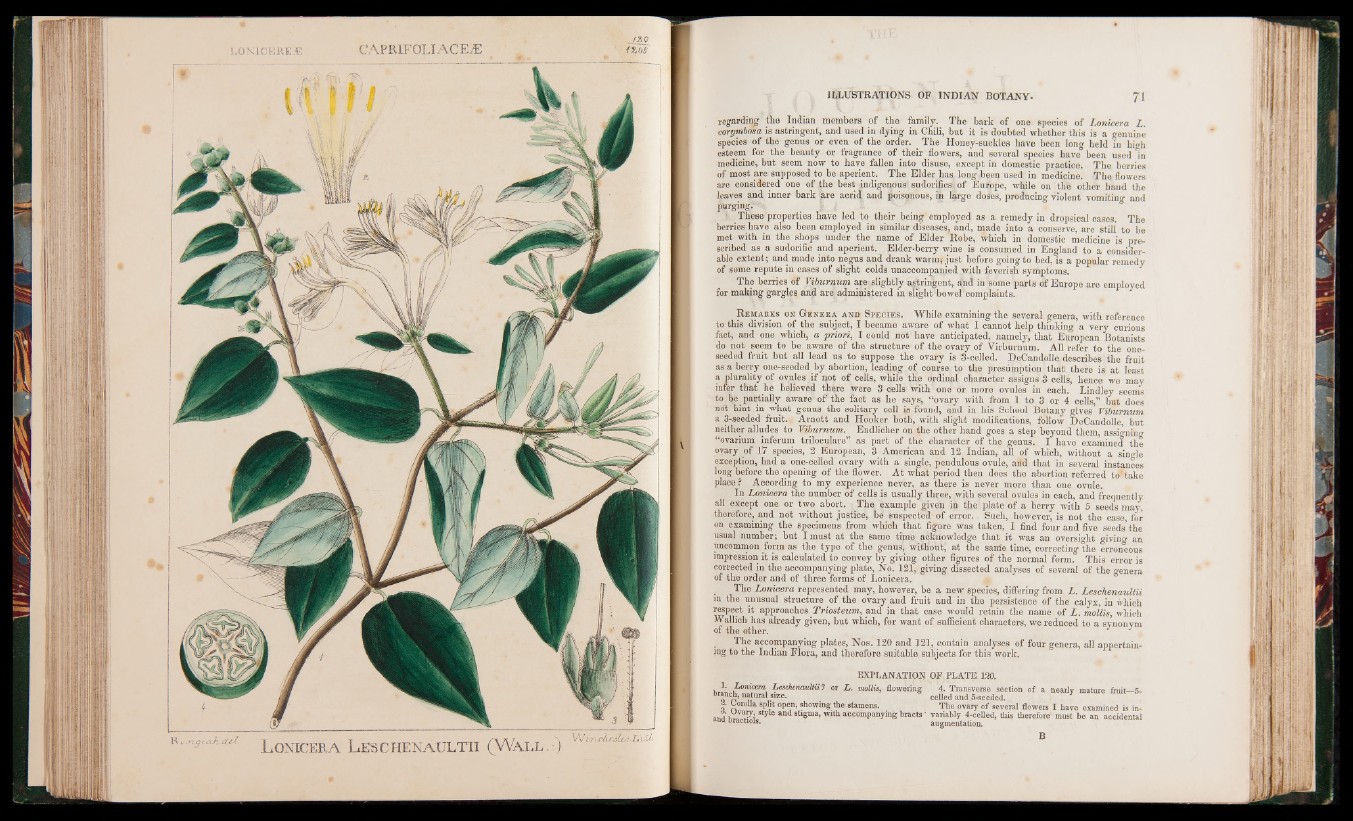
regarding tie Indian members of the family. The bark of one species of Lonicera L.
curymbosa is astringent, and nsed in dying in Chili, but it is doubted whether this is a genuine
species of the genus or even of the order. The Honey-suckles have been long held in high
esteem for the beauty or fragrance of their flowers, and several species have been used in
medicine, but seem now to have fallen into disuse, except in domestic practice. The berries
of most are supposed to be aperient. The Elder has, long been used in medicine. The flowers
are considered one of the best indigenous', sudor$cs| of Europe, while on thé other hand the
leaves and inner bark Wre acric| and poisonous, in large doSes, producing violent vomiting and
purging; _ I | t.
I These properties have led to their being employed as a remedy in dropsical cases. The
berries have also been employed in similar diseases, and, made into a conserve, are still to be
met with in the shops under the name of Elder Robe, which in domestic medicine is prescribed
as a sudorific and aperient. : Elder-berry wine is consumed in England to a considerable
extent; and made into negus and drank warm; just before going to bed, is a popular remedy
of some repute in cases of slight colds unaccompanied with feverish symptoms.
The berries tif are;slightly astringent, and in some parts of Europe are employed
for making gargles and aré'Udministered in slight bo wel complaints.
R emarks on Genera and Species. While examining the several genera, with reference
to this division of the subject, I became aware of what I cannot help thinking a very curious
fact, and one which, a priori, I could not have anticipated, namely, that European Botanists
do not seem fo be aware of the structure of the ovary of Virburnum. All refer to the one-
seeded fruit but all lead ns to suppose the ovary is 3-celled. DeCandolle describes the fruit
as a berry one-seeded by abortion, leading of course to the presumption that there is at least
a plurality of o^uleS jif not of cells, while the drdinal character assigns 3 cdlls, hence we may
infe.r that he believed there were 3 cells with' one or more ovules in each. Lindley seems
to fee partially aware'of the fact as he says, “ovary with from 1 to 3 or 4. cells,” but does
not hint in what genus the solitary cell is found, and in his School Botany gives Viburnum
a 3-seeded fruit., Arnott and Hooker both, with slight modifications, follow DeCandolle, but
neither alludes to Viburnum. Endlicher on the other hand goes a step beyond them, assigning
“ovarium inferum triloculare” as part of the character of the genus. I have examined the
ovary of 17 species, 2 European, 3 American and 12 Indian, all of which, without a single
exception, had a one-celled ovary with a single, pendulous ovule, a id that in several instances
long before the opening of the flower. At what period then does the abortion referred to*take
place ? According to my experience never, as there is never more than one ovule.
In Lonicera the number of cells is usually three, with several ovules in each, and frequently
all except one or two abort. : The example given in the plate of a berry with 5 seeds may,
therefore, and not without jusfe4-be suspected of error. - Such, however, is not the case for
on examining the specimens from which that figure was taken, I find four and five seeds’the
usual number; but I must at thé same time acknowledge that it was an oversight giving an
uncommon form as the type of the genus; without,' at the sanie time, correcting the erroneous
impression it is calculated to convey by giving other figures of the normal form. This error is
corrected in the accompanying plate, No. 121, giving dissected analyses of several of the genera
of the order and of three forms of Lonicera.
The Lonicera represented may, however, be a new species, differing from L. Leschenaultii
m the unusual structure of the ovary and fruit and in the persistence of the calyx, in which
respect it approaches Triosteum, and in that case would retain the name of L. mollis, which
Wallich has already given, but which, for want of sufficient characters, we reduced to a svnonvm
of the other. J
The accompanying plates, Nos. 120 and 121, contain analyses of four genera, all appertaining
to the Indian Flora, and therefore suitable subjects for this work.
EXPLANATION OF PLATE 120.
1. Lonicera Lcschcnaullii ? or L. mollis, flowering 4. Transverse section of a nearlv mature fruit—5-
o anch, natural size. celled and 5-seeded.
4. Corolla split open, showing the stamens. The ovary of several flowers I have examined is inand
IsHInlI St^ e an(* shgma, with accompanying bracts * variably 4-celled, this therefore must be an accidental
u eracuols. augmentation.
B